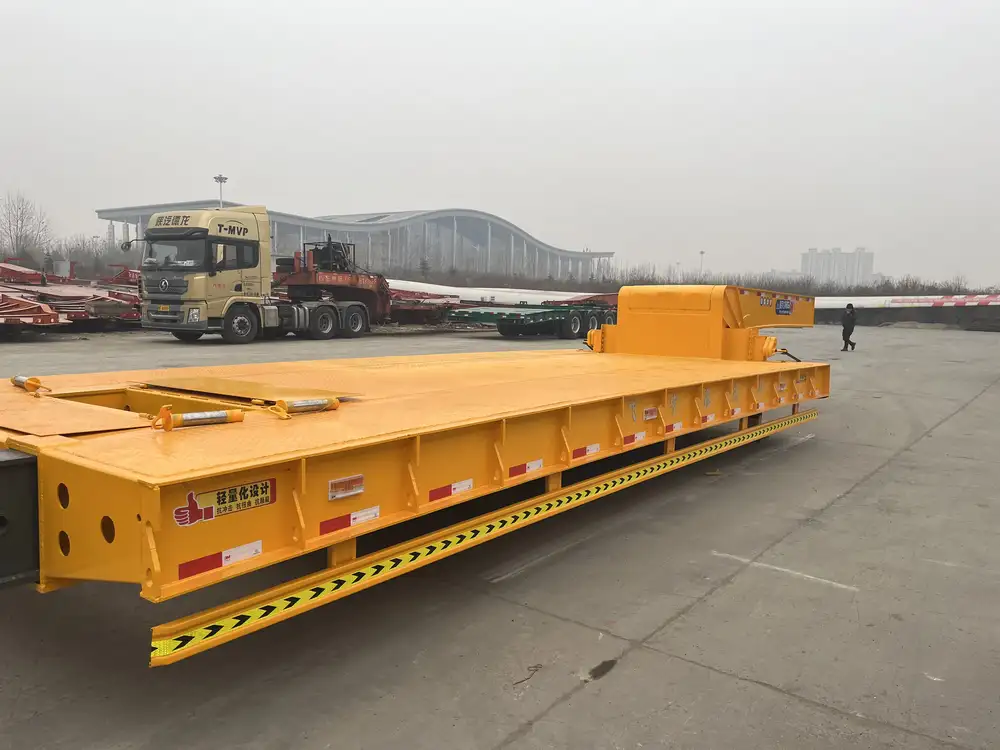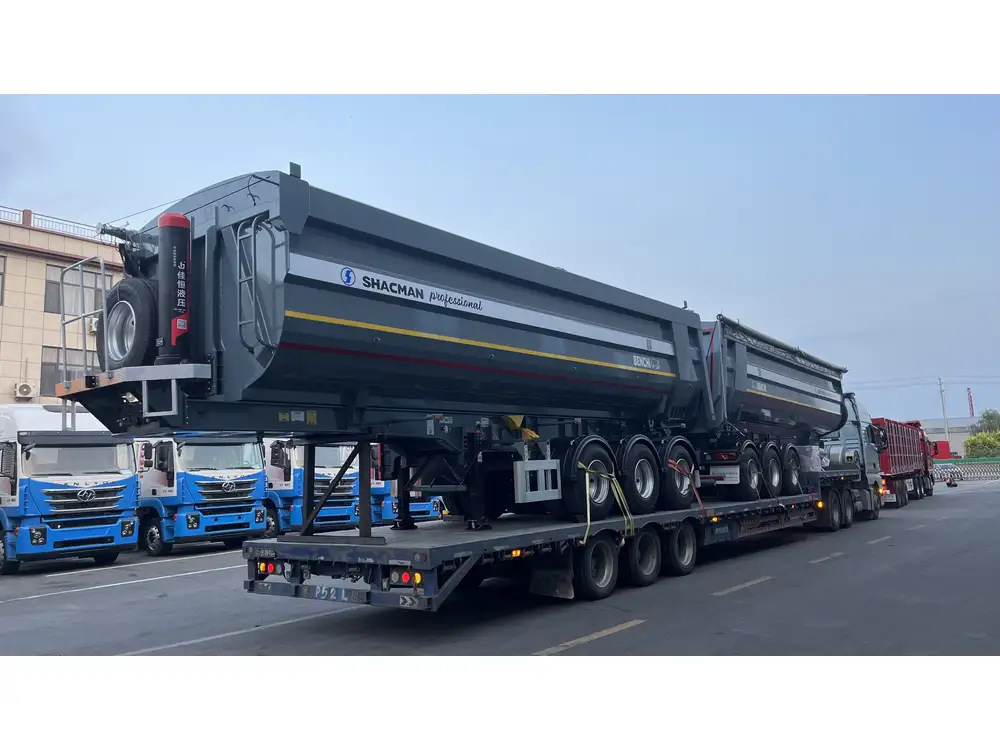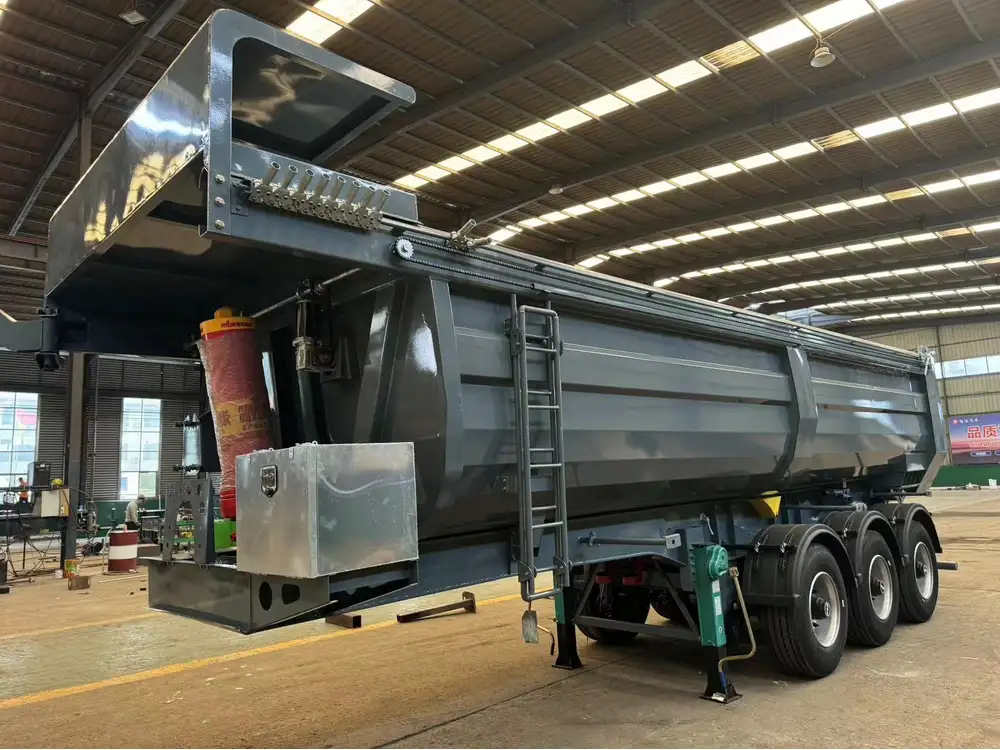When it comes to designing and manufacturing a container trailer, selecting the appropriate I-beam size is crucial for ensuring structural integrity, safety, and efficiency. In this article, we delve into the key factors influencing the decision-making process regarding I-beam dimensions for a 20 ft container trailer. From load-bearing capabilities to material selection, we cover everything you need to know to make an informed purchasing decision.
Understanding I-Beam Specifications
What Is an I-Beam?
An I-beam, also known as a universal beam or H-beam, is a structural element characterized by its I-shaped cross-section. This design allows for effective load distribution and makes it ideal for construction applications, including the frames of container trailers.

Key Measurements of an I-Beam
Understanding the different measurements of I-beams is essential for selecting the right one. Key dimensions include:
- Depth (D): The overall height of the beam. A greater depth improves load-bearing capacity.
- Flange Width (B): The width of the horizontal “flanges.” Wider flanges help distribute loads better.
- Web Thickness (t_w): The thickness of the vertical section. Thicker webs add strength.
- Flange Thickness (t_f): The thickness of the flange material, crucial for determining the robustness of the beam.
Load Calculation and Design Considerations
Determining Load Requirements
Calculating the load requirements for your trailer is critical. This includes:
- Static Loads: The weight of the container itself, including goods.
- Dynamic Loads: Forces experienced during motion, such as acceleration and braking.
- Environmental Loads: Factors like wind resistance, which can impact stability.

Factors Influencing Load Calculation
- Weight of the Container: A standard 20 ft container weighs approximately 4,800 lbs empty and can hold up to 30,000 lbs of cargo.
- Design Safety Factors: A safety factor typically ranges between 1.5 to 3, depending on the application.
- Material Strength: Different materials exhibit varying load characteristics. Common materials for I-beams include carbon steel, aluminum, and composites.
| Load Type | Example Value (lbs) |
|---|---|
| Empty Container | 4,800 |
| Max Payload | 30,000 |
| Total Load | 34,800 (static) |
| Safety Factor Range | 1.5 – 3 |
Choosing the Right I-Beam Size for a 20 ft Container Trailer
Recommended I-Beam Sizes
The specific I-beam size you’ll need can vary significantly based on the factors mentioned above. However, industry standards often suggest the following:
- W8x10: Suitable for lighter loads, this size features a depth of 8 inches and weighs 10 lbs per foot, making it an excellent choice for lightweight applications.
- W10x12: This is a versatile size that balances weight and strength, suitable for medium load requirements.
- W12x14: This I-beam offers enhanced strength, suitable for trailers expected to carry heavier loads.

Detailed Strength Comparisons
| I-Beam Size | Depth (inches) | Weight (lbs per ft) | Yield Strength (ksi) | Moment of Inertia (in^4) |
|---|---|---|---|---|
| W8x10 | 8 | 10 | 36 | 12.5 |
| W10x12 | 10 | 12 | 36 | 24.4 |
| W12x14 | 12 | 14 | 36 | 41.6 |
Considerations for Building Your Trailer
When constructing a 20 ft container trailer, you must take additional factors into account, including:
- Welding Quality: Ensure that the I-beam connections are welded properly to maintain stability and safety.
- Corrosion Resistance: Consider coatings or materials that resist environmental wear, especially for trailers operating in harsh conditions.
- Trailer Design: Evaluate how the I-beam fits into the overall design of the trailer. Is there sufficient clearance for the container? How will weight distribution affect the handling?
Addressing User Questions

What Is the Maximum Load for a 20 ft Container Trailer?
The maximum load for a 20 ft container trailer depends on the gross weight capacity established for both the trailer and the axles. A typical 20 ft container trailer can handle a gross vehicle weight (GVWR) of around 45,000 lbs, including the trailer’s weight and the cargo.
How Do I Ensure the I-Beam Is Strong Enough?
Choosing the correct size and material for the I-beam requires careful calculations of load, safety factors, and intended use. Consulting with a structural engineer or a manufacturer specializing in trailers ensures you choose an I-beam that meets or exceeds your requirements.
What Material Is Best for I-Beams in Trailers?
The most common materials are:
- Steel: Offers high tensile strength and durability but is susceptible to corrosion unless treated.
- Aluminum: Lightweight and rust-resistant, aluminum is ideal for reducing trailer weight but may not support as heavy loads as steel.
| Material | Weight (lbs per ft) | Strength | Cost |
|---|---|---|---|
| Steel | Heavier | High | Moderate |
| Aluminum | Lighter | Moderate | Higher |

Concluding Thoughts
Selecting the correct I-beam size for a 20 ft container trailer requires careful consideration of various factors, including load requirements, safety factors, and the overall design of the trailer. A well-chosen I-beam can make the difference between a reliable, durable trailer and one that fails under strain.
By leveraging this comprehensive guide, you can make informed decisions, ensuring your container trailer construction meets high standards of safety and efficiency. Whether you are a manufacturer or an end-user, understanding these intricacies will empower you to navigate the complexities of trailer design effectively.
Invest in quality, consult experts when necessary, and ensure every component is chosen with precision. Your journey into the realm of container trailers starts here—build wisely!



